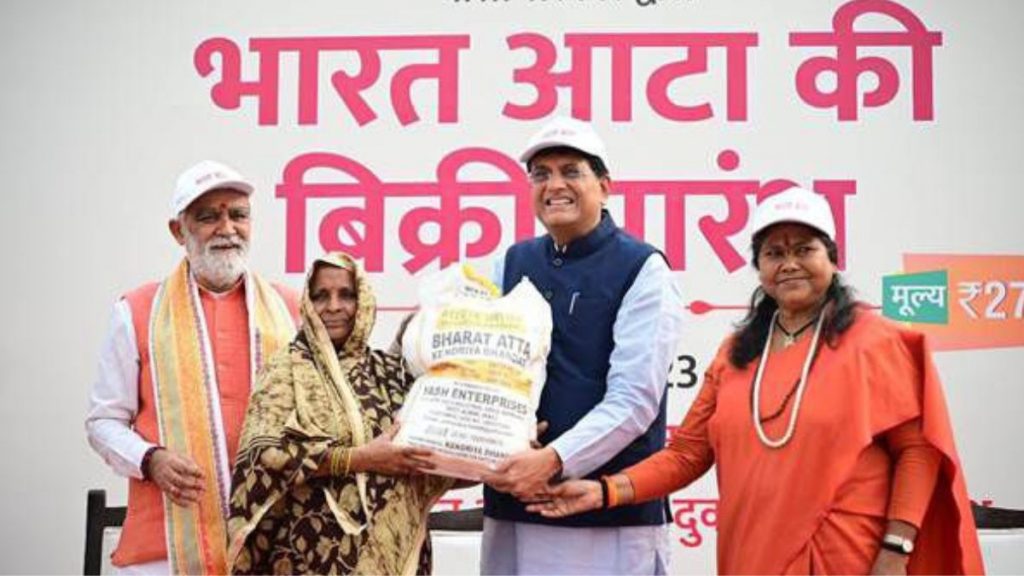New Delhi: Subsidised Bharat Aata sale was formally launched in the markets by Union Minister for Commerce & Industry, Consumer Affairs & Food & Public Distribution Piyush Goyal on Monday.
While the average price of ordinary Aata (Wheat flour) in the country is around ₹36, the newly launched Bharat Aata will be made available at a relatively affordable price of 27.5 per Kilogram through major cooperative institutions like NAFED (National Agricultural Cooperative Marketing Federation of India Ltd.) and NCCF (National Cooperative Consumers Federation of India).
#BharatAtta @ ₹27.50/KG
मोदी है तो मुमकिन है। pic.twitter.com/wOmcJGlbQg
— Piyush Goyal (@PiyushGoyal) November 6, 2023
For the purpose of meeting consumers’ requirements, a total of 2.5 lakh metric tons of wheat has been granted to several government agencies who will convert the same into aata before making it available throughout the country through 700 government mobile vans and 2000 govt-run outlets.
सेवा के लिए तैयार #BharatAtta
📍कर्तव्यपथ pic.twitter.com/jAH9PbZJDK
— Piyush Goyal (@PiyushGoyal) November 6, 2023
Welfare of farmers and consumers
During the inauguration of the Bharat Aata sale, Union Minister Piyush Goyal called it a step towards the welfare of both farmers and consumers of the country. He said that whenever the countrymen have struggled due to hiking prices, the government has always procured food commodities and made them available at affordable subsidized prices for their benefit.”Various measures were taken by the government in the past concerning Tomato and Onion to cool off-prices”, Goyal added further.
Notably, the low-priced Bharat Aata launch comes at a crucial time when the country is facing persistently high retail inflation that has compelled the government to roll out several preventive measures including ban on the export of products such as wheat and rice to ensure their availability and accessibility in the domestic markets.
Retail inflation remains higher than RBI’s target
In September, the country’s retail inflation remained at an alarming 5.6 percent which was significantly higher than RBI’s medium-term target of 4.0℅. However, the inflation rates for September remained lower in comparison with August and July which recorded sky-high retail inflation of 6.83% & 7.44% respectively.
Meanwhile, as certain divisions of exporters and traders knocked on the government’s door pleading for relaxation on export duties and permits, the government made it very clear that catering to the needs of 1.4 billion Indians would be its priority. The central bank (which formulates monetary policies and tracks inflation) also signaled that containing consumer inflation would be crucial before considering any easing or relaxation in the rates.

